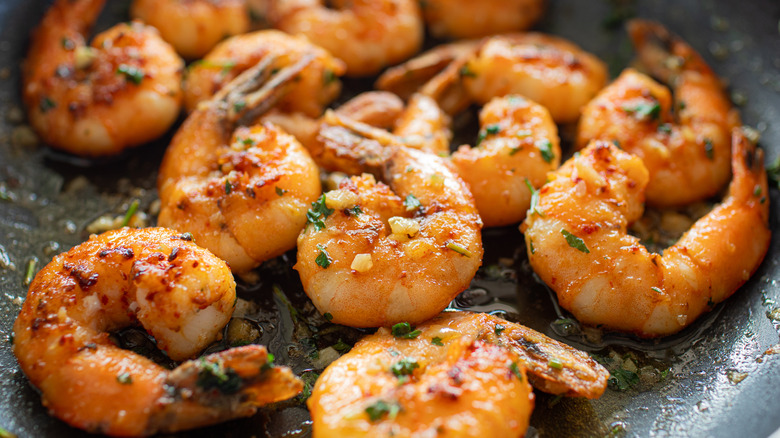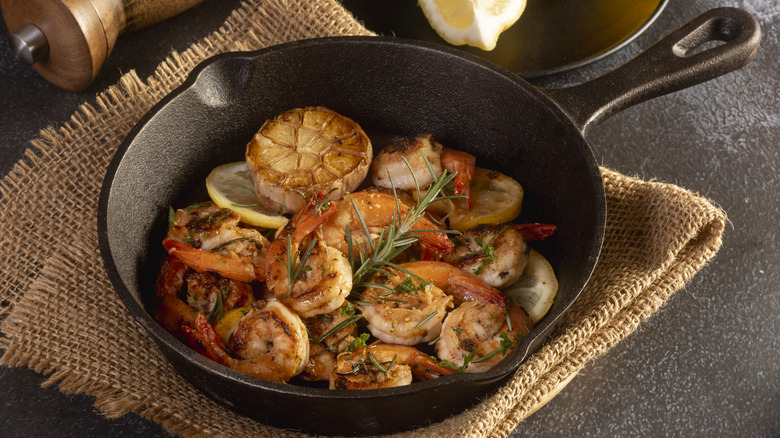A Touch Of Honey Is The Secret To Better Browning On Pan-Seared Shrimp
Searing is a skill that's worth mastering. A matter of cooking food at a high temperature, the technique results in crisper (but, also juicier) textures, along with richer flavors and even elevated aesthetics. In theory, pan-searing is also pretty easy. However, doing it successfully is another story, especially shrimp. Luckily, a drizzle of honey is all it takes to keep shrimp succulent while making browning a breeze.
There are several reasons why searing shrimp can be so difficult. Firstly, the protein is quite lean, meaning it doesn't retain moisture, nor does it crisp up as effectively as fattier options. Based on its composition, shrimp also cooks rapidly, which can cause it to become tough before it can properly brown. Although there are various tips and tricks that promise better pan-seared shrimp, tossing the shellfish in honey is by far the greatest hack. Since honey has such a high level of fructose, it helps to fast-track browning (and caramelization), allowing shrimp to form a golden crust and stay as juicy as possible.
Naturally, while browning has its gustatory perks as flavors and aromas flourish during the Maillard reaction, honey also imparts its own nuances. Its exact profile may vary depending on the variety, however, its predominant sweetness balances the savoriness of shrimp. Honey even harmonizes well with the crustacean's salty and briny qualities. Not to mention that as saccharine honey caramelizes, traces of toast and nuts also develop, elevating flavor even further.
The dos and don'ts of achieving the perfect pan-seared shrimp
Beyond a drizzle of honey, there are all sorts of factors that can impact how well shrimp sears. Starting with the tools, it's essential that the right pan is used. Since stainless steel retains heat and distributes it more evenly than other materials, pans made with this material will produce the most successful sear. With the correct tools selected, you can start prepping the shrimp.
Generally, the fresher, the better. But, if you're working with frozen shrimp, thaw them to keep moisture in check so that they don't end up steaming rather than searing. Additionally, salting shrimp and letting them rest can work to both season and maintain moisture during browning. Once the salt is brushed off and the shrimp is patted dry, this is when they should be coated in a touch (think: a spoonful) of honey to encourage quicker caramelization.
When it's time to start pan-searing, opt to sear cold shrimp in a cold pan to produce plumper, evenly bronzed shellfish. Likewise, using less oil and relying on medium-high heat will lead to golden and scorch-free results. We also recommend spacing out the crustaceans to encourage crisp exteriors, much like not moving them much — flip them only once they've turned opaque, which should happen within minutes. Just like that, perfectly pan-seared shrimp should cease to be scary. So, put your newfound wisdom to the test and whip up sensational seared shrimp bruschetta today!

